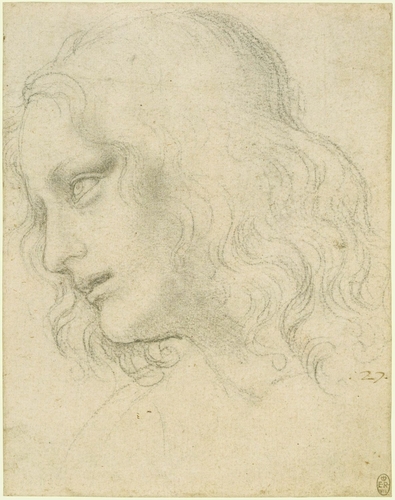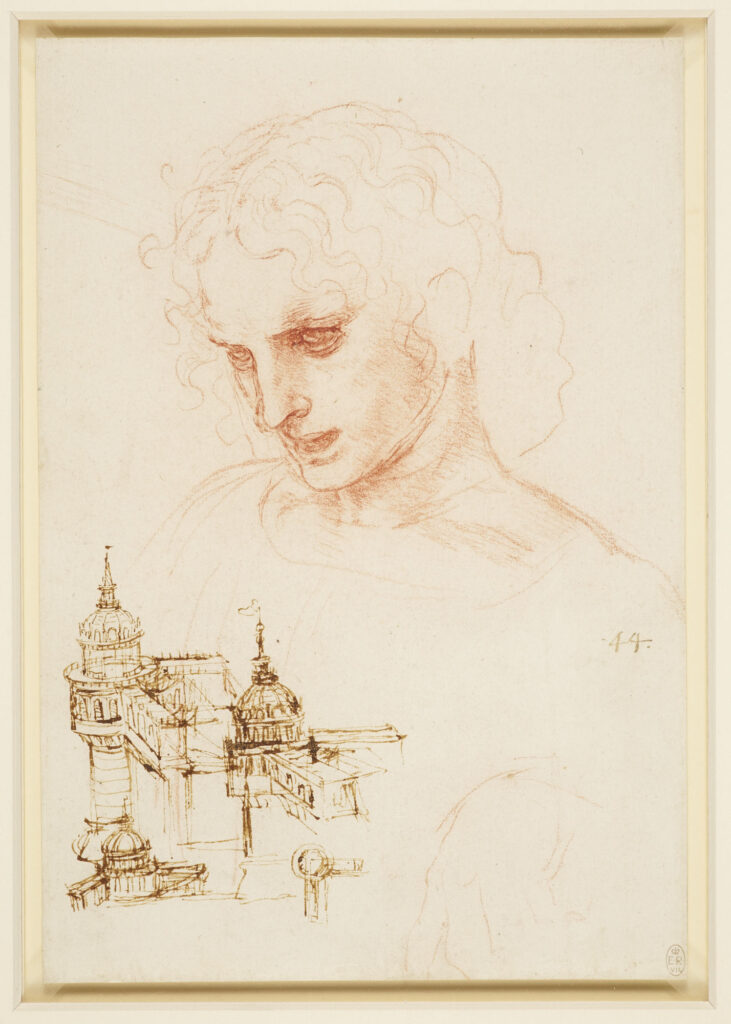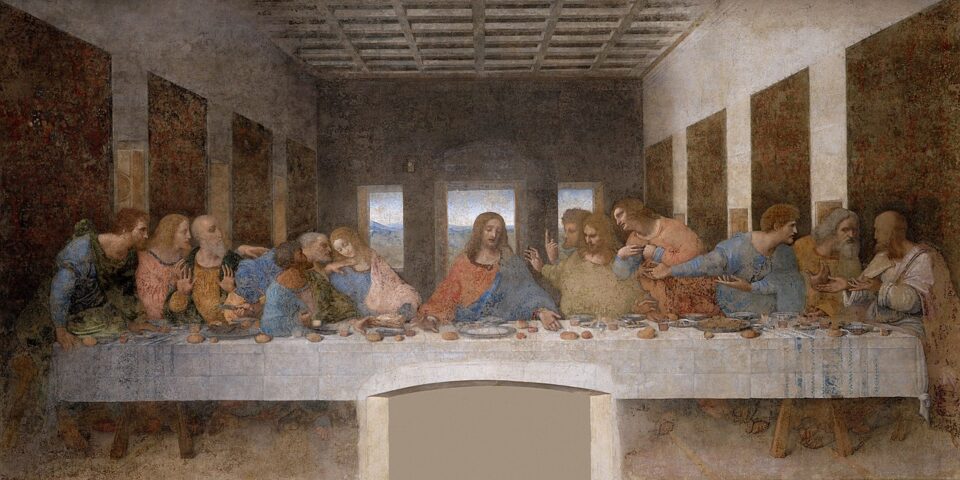“It is not in your power to give greater divinity and beauty to any figures than you have done with James the Greater and James the Less.“ [1]
Gian Paolo Lomazzo (1538 – 1592) was an Italian artist and writer on art. He worked and lived in Milan. Praised as a painter, Lomazzo wrote about artistic practice and art theory after blindness compelled him to pursue a different professional path. [2]
Lomazzo tells us that the head of Christ (in The Last Supper) was the subject of long meditation with Leonardo. (…) And in another place the same writer relates that, being in despair at not being able to give to his Christ the perfection he desired, Leonardo asked counsel of his friend Bernardo Zenale, who comforted him by saying, “O Leonardo, the error into which you have fallen is one from which only the Divine Being Himself can deliver you; for it is not in your power, nor in that of anyone else to give greater divinity and beauty to any figures than you have done to these of James the Greater and the Less; therefore be of good cheer and leave Christ imperfect, for you will never be able to accomplish the Christ after such Apostles“. [3]
Lomazzo is very likely not thinking of a generally perfect depiction of the all already painted Apostles, but is very concrete and specific. The context is provided by the introduction to his chapter, where he writes about Euphranor, an ancient painter, who in Athens painted the Twelve Gods. His figure of Neptune was so excellent in proportion, colour, and form that he could not subsequently paint Jupiter (the principal deity) with a more beautiful aspect. [4]
This record is valuable because it points to the master Leonardo’s effort to depict specific figures of the Apostles. It also highlights the execution of a pair of Apostles. In my opinion, these are two of the Apostles for whom we also have preparatory studies preserved in the Royal Collection at Buckingham Palace.
Reading Lomazzo’s original, he describes them as “di tanta bellezza, & maestà“ – “of such beauty and majesty“ and he further quotes Leonardo’s friend Bernardo Zenale, who spoke of the impossibility of giving a greater “diuinità, & bellezza“ – “divinity and beauty“ to any other figure. [5]
Apart from the subjective aesthetic point of view, we have already mentioned earlier that in Leonardo’s preparatory Study for The Last Supper, the written form of the name of one of the two Philips is close to the form “Iacopo”. [6]
And besides, there is also the argument of unity, Lomazzo in the Italian original first addresses the Apostles as “Giacomo maggiore, & il minore“, where “il“ means a defining, definite article. Subsequently, in the Italian original, he quotes Bernardo Zenale as “Imperoche non è in potestà tua ne d’altri, di dar maggior diuinità, & bellezza ad alcuna figura di quella ch’hai dato à Giacomo maggiore, & minore“. [5]
Apostles to look for in The Last Supper

The head of an Apostle in the Last Supper (The King’s Gallery, Buckingham Palace, UK; c.1495)

This fits nicely with and confirms the list of names advocated in previous texts on this site, while the main source of my fervent devotion is that the list is based on Leonardo’s inscription of names in the Preparatory Drawing for The Last Supper. Hence The Last Supper’s depictions of James the Greater and James the Less sufficiently justify the listed superlatives, beauty & majesty, divinity & beauty, and their figures being painted in close proximity create a majestic and beautiful unity and contrast.
Literature and comments
[1] In the previous sections we have referred to James the Less primarily as James the Minor. In this chapter, due to the cited English translation, we use the form James the Less.
[2] https://en.wikipedia.org/wiki/Gian_Paolo_Lomazzo;
[3] We take this paragraph as a whole as the main original translation into English for our purposes.
Leonardo da Vinci and His Works; p. 32; Charles W. Heaton; 1874
[4] Neptune and Jupiter are the Roman equivalents of Poseidon and Zeus from the Greek pantheon.
[5] Trattato dell’arte della pittura, scoltura et architettura; p. 50-51, cap. ix., libro i.; Gian Paolo Lomazzo; 1584
[6] Iacopo – other permitted form is Jacopo. The English translation would be Jacob. Another allowed equivalent of the name is the Italian Giacomo, with the English translation James.
In the Venice drawing Leonardo da Vinci addresses James the Greater as “Iacopo Magore”.

Hello! I hope you’re having a great day. Good luck 🙂
What of the images on the front drop of the tablecloth??
Leonardo da Vinci was delicate with his depictions of such structures. It reminds me of his design for Salvator Mundi. The left and right sides are not identical and the left one is more damaged. Copying artists either omitted this pattern on the tablecloth or placed the right, more preserved part on both sides. This is addressed, for example, by Stano Lajda from the Slovak Republic, who created a reconstruction – a copy of the Last Supper in a ratio of 1:3, while paying particular attention to the reconstruction of the tablecloth patterns.